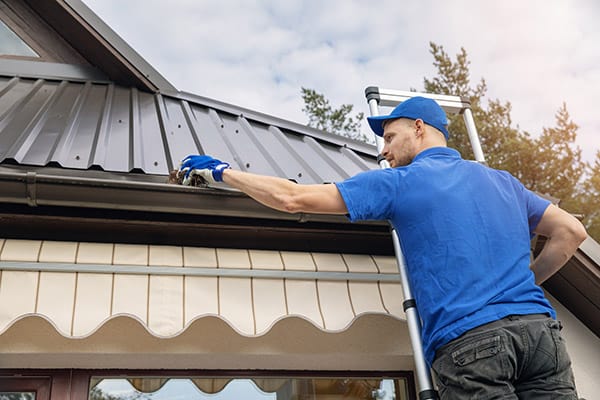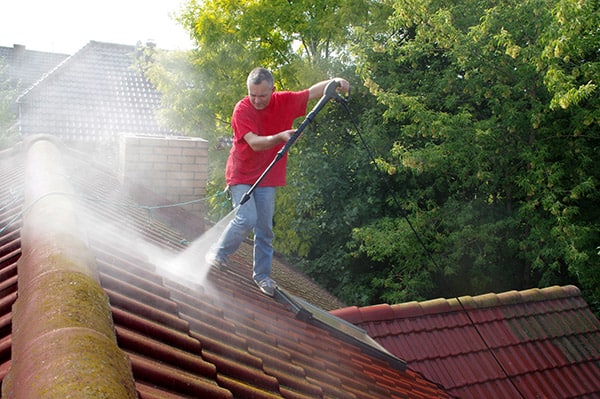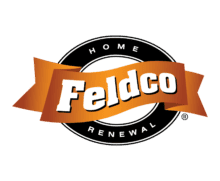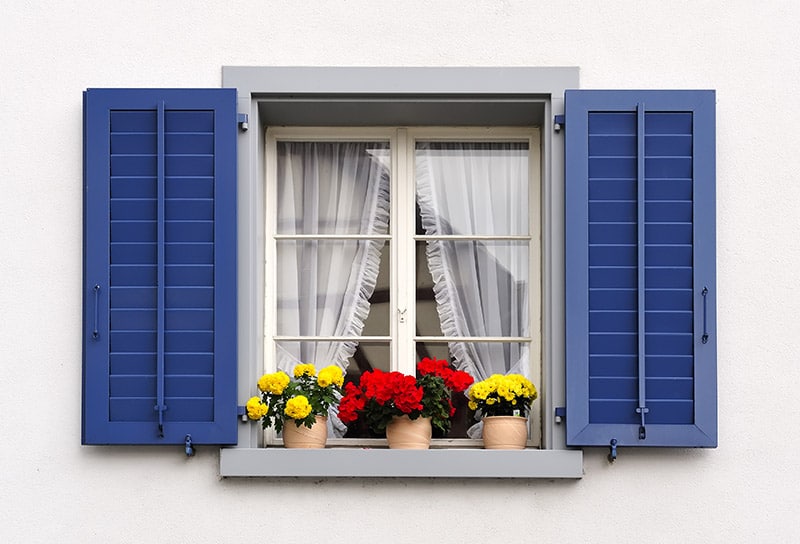How to Clean Your Roof Effectively
Roof shingles are a vital component to the appearance of your exterior. In addition to helping guarantee security and prevent water damage, your roof also helps curb appeal.
The roof is actually one of the first aspects of the exterior that appraisers check when calculating a home value. Even if you don’t have the funds to replace a roof, you can substantially improve its appearance by giving it a good clean.

How do you effectively clean a roof? The DIY project (so long as you don’t mind heights) will get your roof looking better in little time and with only a few dollars spent.
Inspecting Your Roof
Do your shingles look discolored in some areas? Is it full of debris and other junk? Discolored shingles are a combination of mold, algae, and/or moss. Certain sides of the roof depending on what location it faces are known to collect one type of bacteria over another.
The north and west, as well as any other shady areas on a roof (because of trees), are notorious for collecting mold, algae, and moss. The bacteria spreads from rooftop to rooftop through the wind, or animals, and becomes a nuisance over time.
If these types of bacteria are left untreated, shingles can curl up and blow off the structure, leaving the roof susceptible to water damage. Even in worst case scenarios where shingles don’t blow off the structure, the lifespan of the roof is still shortened.
Therefore, it’s important to provide periodic maintenance to your roof by cleaning it thoroughly.
Tools You Will Need
Cleaning a roof does not take too much time or money. It depends on the size of the structure, but most jobs you can complete in less than two hours. The most important thing is safety since you’re dealing with heights. Never try to get on top of a structure you’re not comfortable with, especially very steep roofs that are high off the ground.
You may need to hire a professional if you’re uncomfortable with the situation. However, if after inspecting the roof you feel like you’re capable of completing the task, you will need:
- Ladder or access to roof
- Garden hose
- Spray nozzle
- Lye or other non-toxic
- Non-corrosive roof cleaner
- Protective gloves and eyewear
Please note that while some homeowners may have a pressure washer, it’s NOT recommended for roof shingles. Power washers produce too much psi and can do more harm than good to your shingles.

Guaranteeing the Lifespan of Shingles
New shingles are now coated with a treatment known as an algicide. The chemical is known to keep algae growth within reason about approximately ten years after the roof is installed.
Like every other exterior feature of a home, it gets abused by the weather and elements over the duration of a decade. The algicide wears off and algae has a habit of taking over, particularly on the north and west portions of the roof.
When algae eats away at the limestone on asphalt shingles, it dislodges the light-reflecting granules of the roof. The lifespan is slowly going to deteriorate if you let the algae set for too long. Professional roof cleaners will charge a pretty penny to show up and clean the structure. In some situations, it’s unavoidable if you have a particularly high, steep, or dangerous roof.
However, if you believe you can carry out the task and are comfortable with heights, it’s a straightforward DIY project.
Using the Right Cleaning Products
It is very important that you utilize the right tools and accessories for the job. The same rule applies with the chemicals you use to scrub the shingles.
For starters, it’s never recommended to use a pressure washer on a roof. While some home improvement sites may claim its perfectly acceptable on a low setting, pressure washers can destroy delicate shingles. A home garden hose will suffice instead.
Secondly, the cleaning chemicals you use also matter. Household bleach is not recommended. It is a corrosive agent that can damage metal roof flashings, gutters, as well as downspouts. Discolored roofs may get even more disfigured by the bleach if the chemical is too strong. The runoff will also harm vegetation below like your plants and lawn.
Furthermore, while it may appear that bleach kills algae — which it does with the top layer — the underlying algae fails to get targeted. So once you leave the roof and your hard work for the day, it will inevitably resurface.
Consequently, you need to invest in a sodium hydroxide (lye) product. While sodium hydroxide is corrosive it is less potent. Even better there are non-corrosive roof cleaners on the market that are considered entirely safe for the environment.
Step 1: Prep the Surface
It is important to pick the right day to clean your roof. You will be surprised how uncomfortable being on a roof for a lengthy period of time is when the weather is not suitable. It gains a whole new respect for people that work on roofs for a living.
Asphalt gathers heat quickly so shingles take little time to get scalding. It’s not advised to clean your roof on a hot summer day, especially mid day. Even if you get up early you may still notice the shingles hotter than expected from the day prior.
If possible, try to pick a cool or overcast day to clean the structure. You will not only have cooler temperatures, but also avoid extensive sun exposure too. It will also prevent the cleaning solution from evaporating too quickly into the environment after it’s applied.
When you find the right day, it’s important to prep the roof beforehand. While you are up here it’s a good idea to repair any loose shingles or flashing before you get started. It is also the right time to clean the gutters and downspouts of debris, so all the water you’ll be running through them today will drain properly.
Anything immediately below the roof should get covered or relocated temporarily. It includes items like lawn furniture and any vegetation you do not want to risk exposure to from cleaning chemicals.
Step 2: Mix the Cleaner
Follow the directions on the label If you decide to go with a less invasive corrosive, or non-corrosive cleaner. It will tell you how much chemical you need to mix with the water. A garden hose with a sprayer attachment will suffice for spraying down the shingles.
If possible, have someone on the ground level that can help maneuver the hose around the property as you move around in order to avoid it getting tangled.
Step 3: Hose & Clean the Shingles
After the chemical cleaner is mixed into water run it through your hose. It will provide an even mixture spray across the surface. Once you coat the shingles, give the mixture 15 to 20 minutes to settle and do its work on the algae and moss. Then thoroughly rinse the shingles once again, but this time with just water.
You need to be patient with the treatment. Some homeowners get disgruntled when they don’t immediately notice results. It does take a little time for the solution to eat away at the algae or moss so there’s no need to reapply the solution. Once is enough.
Step 4: Exercise Patience
The primary intention of the chemical solution is to break down the algae. At first the discoloration may not go away which will lead you to believe the job was ineffective.
However, most of the algae will wash away only during rainstorms that happen after the cleaning solution is applied. It takes a little time to eat through it, but the algae will start to disappear and you’ll notice a more consistent, universal color on the roof.
If a lot of debris remains, you may want to return to the roof one day and use a leaf blower to sweep off the rest of the junk that the rain did not wash away.
Also, while you’re up there again why not prune tree branches back from the roof that were previously blocking sunlight and subsequently leading to an increase buildup of algae? These kind of preventive maintenance tips will keep the lifespan of a roof.
Roof Cleaning and Maintenance
As is the case with the rest of your home, preventive maintenance is important. You should keep up with the roof before algae starts to appear. It presents the best opportunity to keep the shingles resembling their original color.
It’s always a good idea to start cleaning your roof during spring and summer. Fall and winter are long seasons that can potentially damage your roof. Therefore, it’s also good to examine the condition of your roof. Consider getting a roof replacement with Feldco Roofing if you feel that the condition of your roof won’t last you for another winter season. Speak to a product specialist and get a free quote online today.





